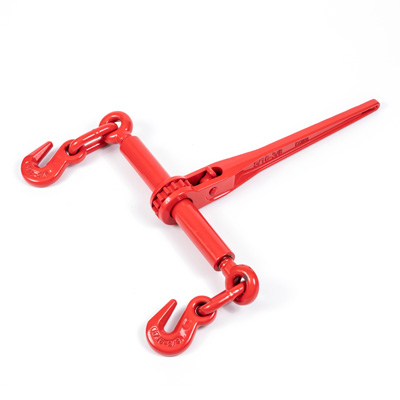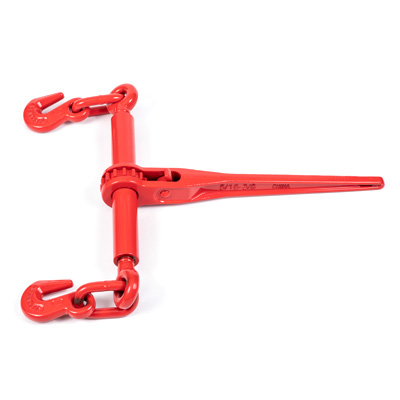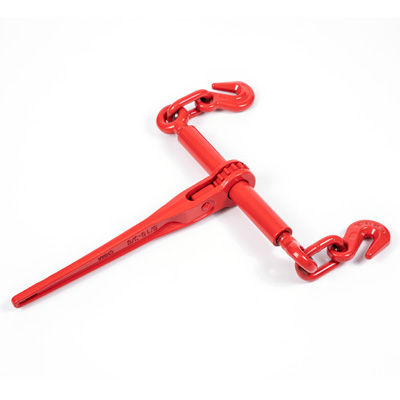
A ratcheting load binder, also known simply as a ratchet binder or a lever binder, is a tool used for securing and tensioning heavy loads during transportation or storage. It is commonly used in the trucking, construction, agriculture, and shipping industries.
A ratcheting load binder consists of a handle, a tensioning mechanism, and two hooks or end fittings. The tensioning mechanism is usually operated by a ratcheting gear system, which allows the user to tighten the binder gradually to achieve the desired tension.

The binder is attached to two ends of a chain, wire rope, or webbing strap that is used to secure the load. One end of the binder is connected to an anchor point on the truck, trailer, or cargo bed, while the other end is attached to the load itself.
To tension the binder, the user operates the ratcheting mechanism by pulling the handle back and forth. With each pull of the handle, the binder tightens incrementally, applying pressure to the secured load and reducing any slack in the tie-down system.

Once the desired tension is achieved, the ratchet mechanism locks in place, preventing the binder from loosening and maintaining the tension on the load. Some ratcheting binders may feature a locking mechanism or a safety pin to secure the handle in the closed position.
To release the tension and remove the binder, the user typically disengages the ratchet mechanism by pulling a release lever or button, allowing the handle to open fully and the tension to be released gradually.
Ratcheting load binders offer several advantages over traditional lever binders, including easier and more controlled tensioning, increased safety, and the ability to make fine adjustments to the tension. However, they require proper training and caution to use safely, as over-tightening can cause damage to the load or the tie-down system. It's essential to follow manufacturer instructions and relevant safety regulations when using ratcheting load binders.
